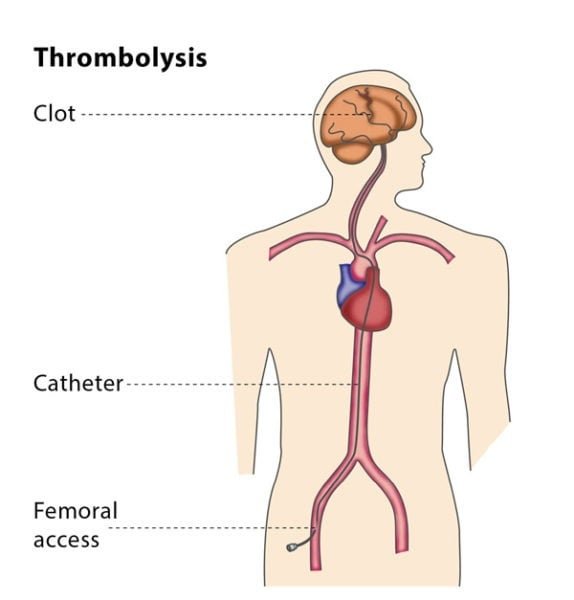What is the Thrombolysis Procedure?
The thrombolysis procedure is a medical treatment designed to dissolve blood clots that block blood flow in arteries or veins. This technique is often employed in emergencies such as strokes, heart attacks, or deep vein thrombosis (DVT). By breaking down clots, thrombolysis restores normal blood circulation, reducing the risk of serious complications.
Why is Thrombolysis Important?
Blood clots can pose significant health risks. They obstruct blood flow, depriving tissues and organs of oxygen. If untreated, clots can lead to severe outcomes, including permanent organ damage or even death. The thrombolysis procedure is vital in such situations, as it quickly resolves clots, mitigating potential complications.
Conditions Treated by Thrombolysis
Thrombolysis is used to address various medical conditions, including:
- Deep Vein Thrombosis (DVT): DVT occurs when blood clots form in the deep veins, typically in the legs. Thrombolysis helps dissolve these clots, preventing further complications like pulmonary embolism.
- Stroke: For ischemic strokes caused by blood clots in the brain, thrombolysis can rapidly restore blood flow, minimizing brain damage.
- Pulmonary Embolism: This life-threatening condition arises when a clot travels to the lungs. Thrombolysis clears the blockage, improving oxygen flow.
- Heart Attacks: By dissolving clots in coronary arteries, thrombolysis reduces heart muscle damage and improves survival rates.
How is the Thrombolysis Procedure Performed?
The thrombolysis procedure can be carried out in two primary ways:
1. Systemic Thrombolysis
In systemic thrombolysis, clot-dissolving medication is delivered through an intravenous (IV) line. This approach ensures the medication reaches the clot, breaking it down effectively. It is commonly used in emergency situations like strokes or heart attacks.
2. Catheter-Directed Thrombolysis
Catheter-directed thrombolysis involves inserting a thin tube (catheter) into the blood vessel. Guided by imaging technology, the catheter is position directly at the clot. Medication is then administer to dissolve the clot locally. This method is preferre for targeted treatment, especially in cases of DVT.
Medications Used in Thrombolysis
Thrombolysis relies on specialized drugs known as thrombolytics or “clot busters.” Commonly used medications include:
- Alteplase (tPA): A tissue plasminogen activator that rapidly breaks down clots.
- Reteplase: Effective for acute heart attacks.
- Tenecteplase: Often used for strokes and heart attacks.
- Streptokinase: An older thrombolytic agent, primarily used in certain cases.
Risks and Complications
While the thrombolysis procedure is highly effective, it carries potential risks:
- Bleeding: The most common side effect, ranging from minor to severe bleeding.
- Allergic Reactions: Rarely, patients may experience adverse reactions to the medication.
- Infection: Associated with catheter-directed thrombolysis if proper hygiene is not maintained.
- Recurrent Clot Formation: In some cases, clots may reform after treatment.
Who is Eligible for Thrombolysis?
Thrombolysis is not suitable for everyone. Doctors assess the patient’s medical history, current condition, and risk factors before recommending the procedure. Contraindications include:
- Recent surgery
- Active bleeding disorders
- Uncontrolled high blood pressure
- A history of hemorrhagic stroke
Recovery After Thrombolysis
Recovery varies depending on the condition treated and the patient’s overall health. Following the procedure, patients may:
- Be monitore in a hospital for a few days to ensure stability.
- Receive blood-thinning medications to prevent future clots.
- Undergo regular follow-ups to assess progress.
- Be advise on lifestyle changes, such as maintaining a healthy diet and regular exercise.
Thrombolysis for Deep Vein Thrombosis (DVT)
One of the most common applications of thrombolysis is for DVT treatment. Deep vein thrombosis treatment often involves catheter-directed thrombolysis to ensure precise clot removal. This minimally invasive approach significantly reduces the risk of post-thrombotic syndrome, a long-term complication of DVT.
Benefits of Thrombolysis
- Rapid Symptom Relief: Patients often experience immediate improvement in symptoms after the procedure.
- Minimized Tissue Damage: Restoring blood flow reduces the risk of permanent tissue or organ damage.
- Enhanced Quality of Life: By addressing clots effectively, thrombolysis improves overall well-being and mobility.
Conclusion
The thrombolysis procedure is a critical medical intervention for conditions like DVT, strokes, and pulmonary embolism. It’s a life-saving technique that restores blood flow and prevents severe complications. While the procedure comes with potential risks, its benefits often outweigh them, especially when performed under expert medical care. If you suspect symptoms of a blood clot, consult a healthcare professional immediately to explore treatment options.




